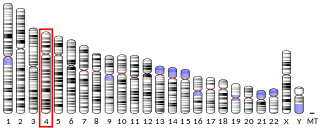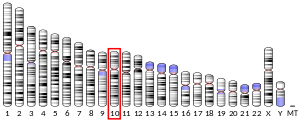
Heřmanský–Pudlák syndrome is an extremely rare autosomal recessive disorder which results in oculocutaneous albinism, bleeding problems due to a platelet abnormality, and storage of an abnormal fat-protein compound. It is considered to affect around 1 in 500,000 people worldwide, with a significantly higher occurrence in Puerto Ricans, with a prevalence of 1 in 1800. Many of the clinical research studies on the disease have been conducted in Puerto Rico.

Dysbindin, short for dystrobrevin-binding protein 1, is a protein constituent of the dystrophin-associated protein complex (DPC) of skeletal muscle cells. It is also a part of BLOC-1, or biogenesis of lysosome-related organelles complex 1. Dysbindin was discovered by the research group of Derek Blake via yeast two-hybrid screening for binding partners of α-dystrobrevin. In addition, dysbindin is found in neural tissue of the brain, particularly in axon bundles and especially in certain axon terminals, notably mossy fiber synaptic terminals in the cerebellum and hippocampus. In humans, dysbindin is encoded by the DTNBP1 gene.

AP-3 complex subunit beta-1 is a protein that in humans is encoded by the AP3B1 gene.

SNARE-associated protein Snapin is a protein that in humans is encoded by the SNAPIN gene.

Peroxisome assembly protein 12 is a protein that in humans is encoded by the PEX12 gene.

Pallidin is a protein that in humans is encoded by the PLDN gene.

Hermansky–Pudlak syndrome 1 protein is a protein that in humans is encoded by the HPS1 gene.

AP-3 complex subunit mu-1 is a protein that in humans is encoded by the AP3M1 gene.

Hermansky–Pudlak syndrome 4 protein is a protein that in humans is encoded by the HPS4 gene.

Hermansky–Pudlak syndrome 3 protein is a protein that in humans is encoded by the HPS3 gene.

Hermansky–Pudlak syndrome 5 protein is a protein that in humans is encoded by the HPS5 gene.

Biogenesis of lysosome-related organelles complex 1 subunit 2 is a protein that in humans is encoded by the BLOC1S2 gene.

Nucleolar protein 6 is a protein that in humans is encoded by the NOL6 gene.

Biogenesis of lysosome-related organelles complex 1 subunit 1 is a protein that in humans is encoded by the BLOC1S1 gene.

Protein Muted homolog is a protein that in humans is encoded by the MUTED gene.

Protein cappuccino homolog is a protein that in humans is encoded by the CNO gene.

Bardet–Biedl syndrome 7 is a protein that in humans is encoded by the BBS7 gene.

Bardet–Biedl syndrome 9 is a protein that in humans is encoded by the BBS9 gene.

Dystrobrevin beta is a protein which in humans is encoded by the DTNB gene.
BLOC-3 or biogenesis of lysosome-related organelles complex 3 is a ubiquitously expressed multisubunit protein complex.


















